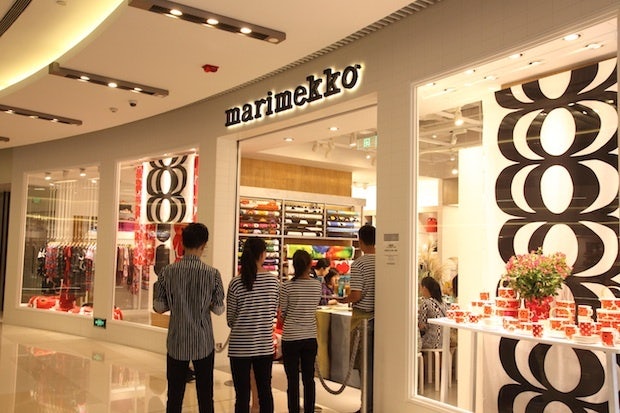
Marimekko's new store in Shanghai. (Erica Ji)
In early August, Finnish design house Marimekko opened its Shanghai store at the IAPM mall, one month after the opening of its first mainland China store in Beijing. The brand invited press to the new store in Shanghai for a preview of its 2013 Fall/Winter interior décor collection, its iconic Unikko print's 50th anniversary special collection, and the 2013 Fall/Winter fashion collection.
Unlike a typical press preview, this time Marimekko flew its print designer Aino-Maija Metsola and fashion designer Teemu Muurimäki to Shanghai to share the concepts behind its Weather Diary collection and Unikko's 50th anniversary collection. Jing Daily took advantage of the rare opportunity and sit down with Metsola and Muurimäki. Despite the fact that they come from the same design house, both designers have distinct personal styles. Metsola was first employed on a freelance basis at Marimekko, and later became an in-house designer in 2012.
The Weather Diary collection shown at the event featured an array of interior products inspired by different weather patterns during the Scandinavian summertime. According to Metsola, the beautiful, almost ethereal, patterns were hand-painted. Muurimäki is a new member who just joined Marimekko not long ago from luxury fashion houses in Paris, Milan, and Sydney. His 10-year overseas experience as a designer for eveningwear and upscale ready-to-wear garments enabled him to introduce new concepts to Unikko's 50th-anniversary apparel.
Read interviews with both of them below.
Print Designer Aino-Maija Metsola:#

Print designer Aino-Maija Metsola. (Erica Ji)
Can you describe the typical design process at Marimekko?#
At Marimekko, we usually start the design process spontaneously. We are usually not carrying out duties or given a framework when we design prints. As print designers, we gather together and discuss what themes we are interested in, and then we begin to sketch and propose print ideas. Most print designers create hand-painted designs. The selected design will then be produced. Marimekko always offers us a lot of freedom to explore our interests.
It doesn't sound like a typical fashion house, does it?#
That's right; I think we are not like a typical fashion house. We a lot of freedom in our creative process.
As you said, most prints are hand-painted. Could you briefly talk about the painting media you use?#
I usually try to use different painting media or techniques to carry out my ideas. Sometimes I use water painting, and sometimes ink or markers. I like to explore different possibilities.
What quality should a designer possess when working for Marimekko?#
I believe you have to be open-minded and curious. You have to love colors, of course. This is very important to Marimekko.

Tableware from the 2013 Fall/Winter Weather Diary collection. (Erica Ji)
You first worked for Marimekko on a freelance basis but now have become its in-house designer. Could you talk about freelancing for the brand?#
Yes. We have many freelance designers; they have been collaborating with the brand for years, some even beyond twenty years. I had been freelancing for Marimekko for seven years, and have been its in-house designer for one year.
How many in-house designers are there at Marimekko?#
In fact, there are only four: a chief fashion designer, a fashion designer, a product manager, and a print designer. However, freelance designers are also very important to Marimekko. They are valued as much as in-house designers.
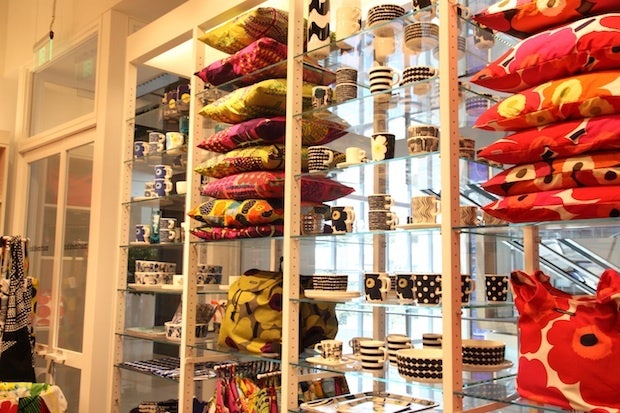
Marimekko's products were designed and manufactured in Finland. Do you think its designs suit the Chinese market?#
Of course we did a lot of research on every market. Some of our designs suit the Asian markets, others the U.S. market, and others the European market. They are vastly different, but I believe people around the world all share the same attitude—the desire to express one's unique personality. This is consistent with Marimekko's brand philosophy.
Fashion Designer Teemu Muurimäki:#
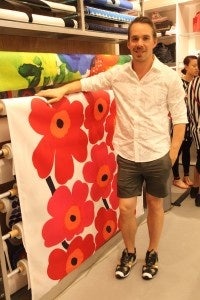
Teemu Muurimäki. (Erica Ji)
You previously designed ready-to-wear clothing for other brands for many years. How is this background reflected in your designs at Marimekko?#
In fact, my job is to design a product, so it doesn't matter if I work for a typical fashion house or for Marimekko. How they start may be different, but the results do not differ that much. I used to design eveningwear and upscale ready-to-wear, but the experience at Marimekko is a little different; it has its own signature style. To be honest, as a new Marimekko designer, there is a lot to learn. However, I think this job is relatively easy since I am a Finnish designer. I am from Finland, and so is Marimekko. I understand Marimekko's brand DNA, but at the same time, I hope I can bring different concepts to Marimekko. At Marimekko, we do not follow trends; we create our own style. I know my design style is more feminine, whereas Marimekko's is more unisex, but I believe this is a good thing because it helps to expand our product lines and to bring us new customers.
Can you define Marimekko's style?#
Prints are Marimekko's core. A typical piece of Marimekko clothing has a minimalist shape, since complicated cuts would affect the presentation of prints and patterns. In the future, I might start to create subtle single-colored designs that reflect Marimekko's philosophy, which is a challenge I am interested in taking.
Does this mean we will see a big change in the style of Marimekko's apparel?#
Not really. What I plan to do is not a huge change, but to expand our product lines.
Can you give some examples of the new products?
#
Yes, I think when we sell our apparel to our customers, we can also provide items that can go with the prints. Most customers usually find it hard to wear printed pants with printed tops; those are the styles only seen in magazines. Customers want simple designs. If they want printed pants, then they want something subtle for the top. Imagine how Marimekko's clothes would be like if they have no prints and patterns on them. Prints are the most important thing for us, of course, because they are our brand's heritage. But we can also use Marimekko's prints as our inspiration for the shapes of clothing. For example, the flower dress you just saw was inspired by the shape of flower petals, which is Marimekko's classic. My inspirations also usually come from these basic shapes, maybe sometimes more complicated ones, but there is always a voice in my brain, telling me to look for the most basic shapes.
Marimekko's products were designed and manufactured in Finland. Do you think its designs suit the Chinese market?#
It is very important to understand Chinese customers. Every fashion house I've worked for, including Marimekko, is always thinking about which styles suit the Chinese market, which suit the United States, and which suit Europe. I have ten years of overseas work experience; I used to work in Australia, used to work for an Italian fashion brand, and used to work in France. Even markets in different European countries are different, in terms of styles and tastes. Since the Chinese market is very important to us, we plan to open several stores in the country. I also hope to come here more often to research.
It is usually hard for Asians to accept audacious prints and bold colors. How does this influence Marimekko's design considerations?#
Fashion never stops changing. This is also my belief; I need to change constantly. I need new things to stimulate inspirations; they can be new techniques or new prints. When I buy a shirt that is totally my style, no one will notice it is new when I wear it for the first time. If I always bought the same type of shirts, it would be boring. I need to buy something different; I need to try new things. When I wear a new type of shirt for the first time, I feel different. I hope our customers can have the same experience. When Chinese customers try on Marimekko's bold prints, they can find their different selves. Of course, we also try to provide designs that suit Chinese customers. Luckily, we also have small-scale patterns and black-and-white collections. We hope every Chinese customer can find their ideal Marimekko product.
Check out some more looks from the Unikko print 50th anniversary special collection below (all photos by Erica Ji):
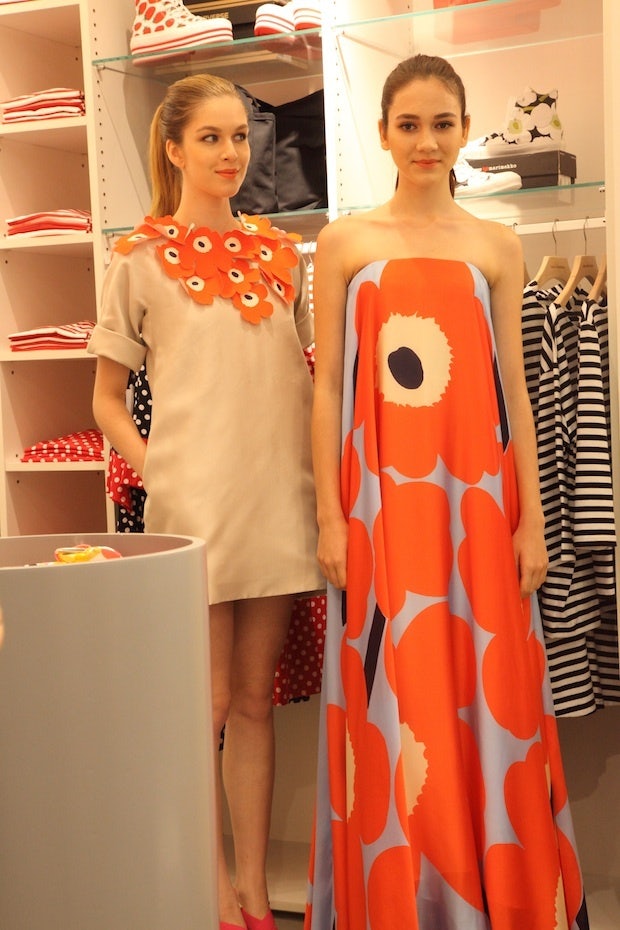
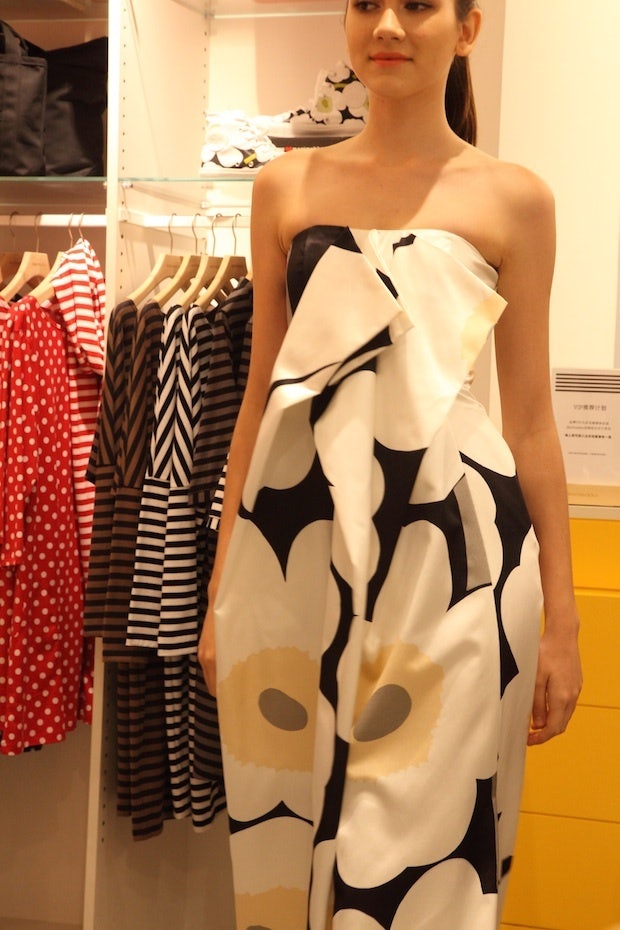
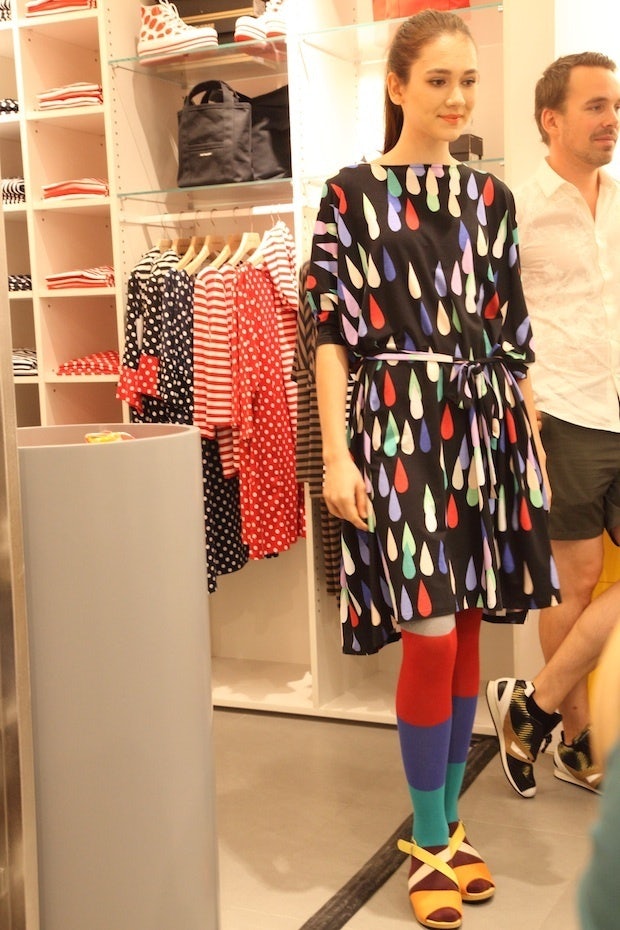
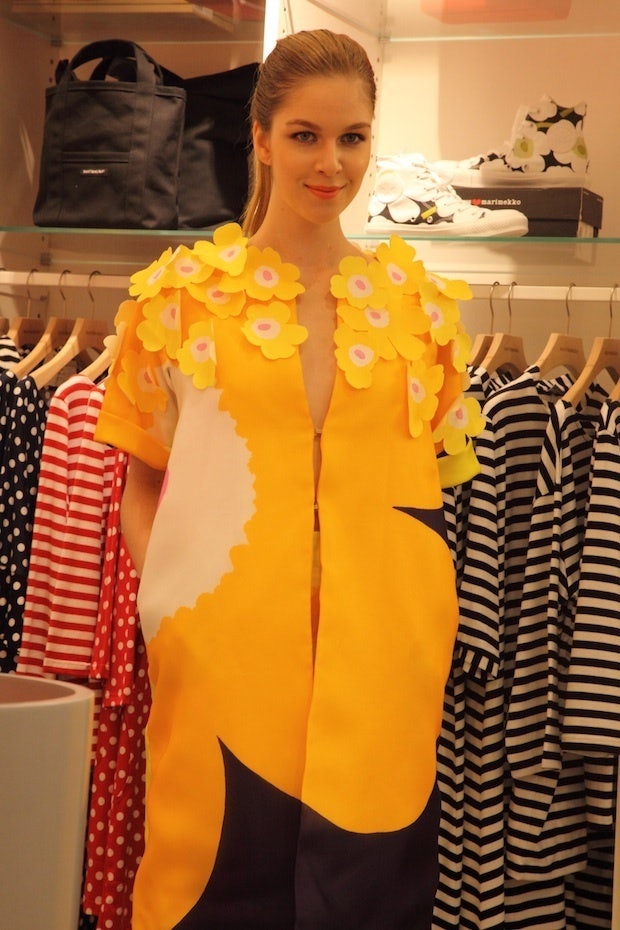
This article originally appeared in Chinese. Translation by Jasmine Lu.